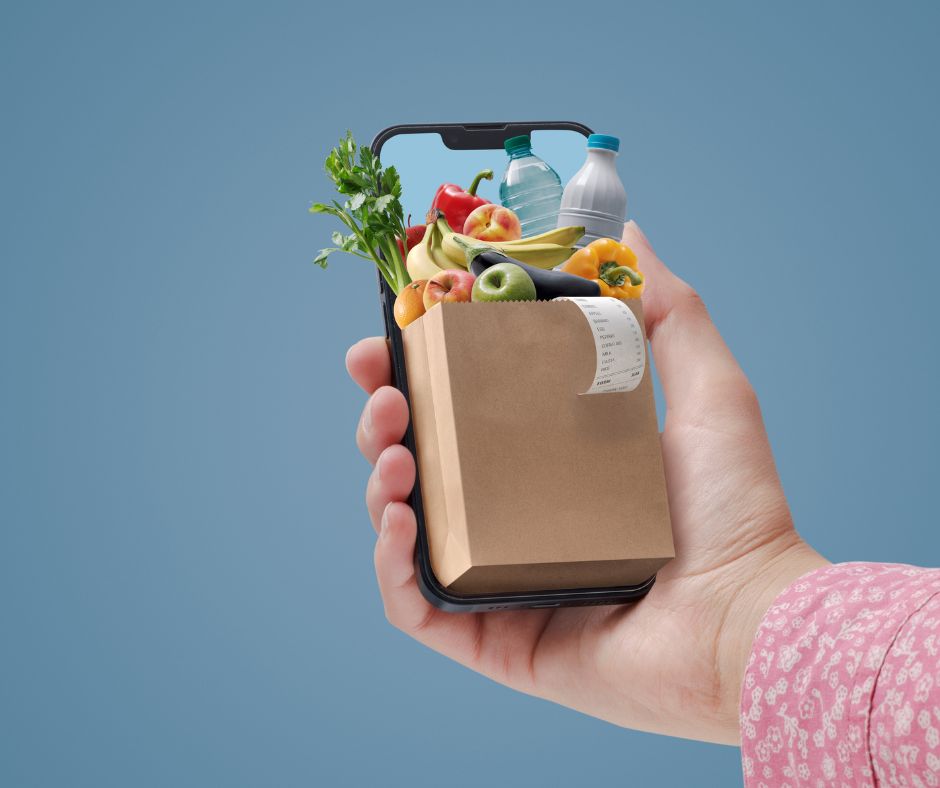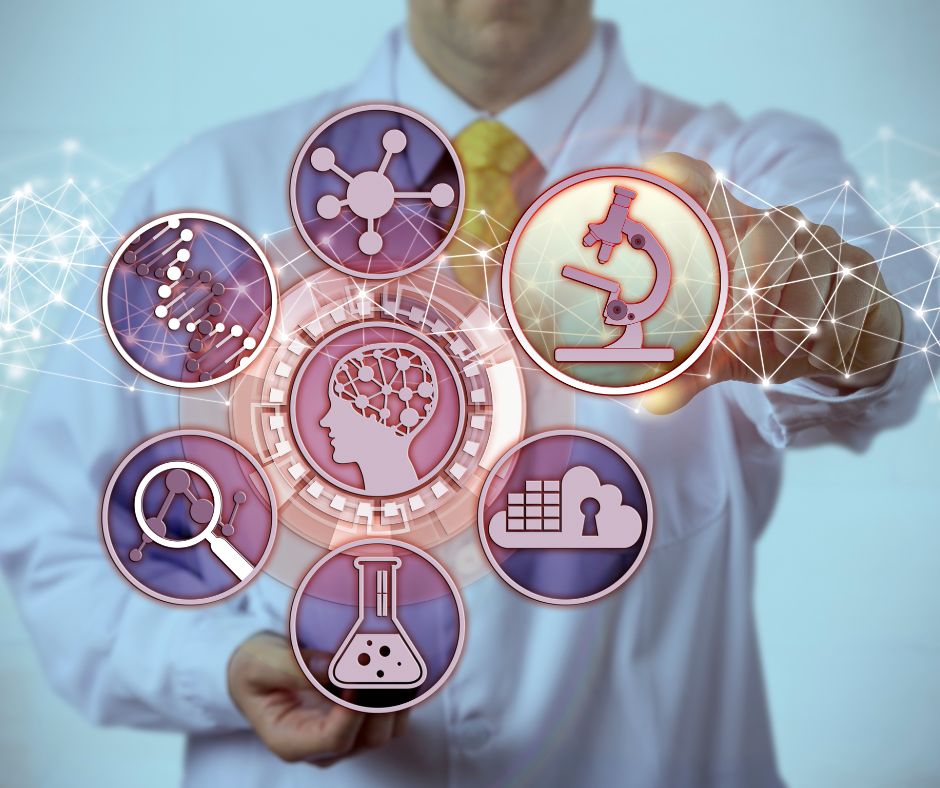In an era where smartphones are our constant companions, nutrition and diet apps have emerged as popular tools for those seeking to shed pounds and encourage healthy eating habits. But when you look past the hype and cool interfaces, do they really work?
It appears so. Research shows that users who regularly use diet and nutrition apps to track their food intake experience 10% more weight loss compared to those who don’t use such apps.
The effectiveness of diet apps depends on many factors. Let’s explore nutrition and diet apps to learn about their true impact on weight loss and overall health.
In this article, we’ll use the terms “diet app” and “nutrition app” interchangeably.
Contents
Understanding Diet Apps
Diet apps have become a staple in the health and wellness industry, offering users a convenient way to track their nutritional intake and manage their diets. But what exactly are diet apps, and how do they work?

Definition and types of diet apps
Diet apps help users track food, manage diets, and support weight loss or maintenance goals. They come in various forms, including:
- Calorie counter apps: These apps, like MyFitnessPal, focus on helping users track calorie intake and monitor nutritional quality.
- Recipe apps: Apps like Paprika provide healthy meal options and cooking instructions tailored to dietary preferences.
- Niche diet tracking apps: Targeted at specific dietary needs, such as vegetarian or diabetic diets, these apps offer specialized tracking and advice.
- Fitness apps: These integrate diet tracking with physical activity monitoring, offering a holistic approach to health management.
Key features commonly found in popular diet apps
Most diet apps share common features that make them effective tools for users:
- Food logging: Allows users to record meals through typing, voice logging, or photographing food items.
- Calorie and nutrient tracking: Tracks daily intake of calories, carbohydrates, proteins, and fats.
- Goal setting and progress tracking: Users can set weight loss goals and track their progress over time.
- Integration with other services: Some apps offer integration with food delivery services or virtual consultations with dietitians.

How diet apps aim to support weight loss efforts
Diet apps support weight loss by providing users with tools to monitor their dietary habits, set achievable goals, and get feedback on their progress. They often include motivational features, such as reminders and rewards, to encourage consistent use.
By fostering awareness and accountability, these apps can help users make informed dietary choices and maintain a balanced diet.
The Science Behind Diet App Effectiveness
Diet apps are popular, but how effective are they in achieving weight loss and improving health outcomes?
Overview of research studies on diet app outcomes
Research indicates that diet apps can positively influence nutritional behaviors and health outcomes:
- Villinger et al (2019 found that app-based interventions improved nutrition behaviors and obesity indices, such as body mass index (BMI).
- Meta-analyses from different studies over the past 2 decades that included 12 weight loss app trials showed that using these apps led to small, but significant weight and BMI decreases, compared to not using apps (Ufholz & Werner, 2023).
- Another study of 14 apps for people with diabetes found similar results, especially for those who were more overweight (Ufholz & Werner, 2023).
- Wang et al. (2016) highlighted that users consider diet apps effective in promoting healthy eating and exercise, particularly when using them consistently over time.

Factors that contribute to diet app success
Everyone has their own goals and reasons for using nutrition and diet apps. What works for one person might not work for another.
Fitness apps are more popular than nutrition apps (König et al., 2021). While we know a lot about why people use fitness trackers, nutrition apps are different, because they need more input from users, and give feedback differently. This might affect how people feel about using them (König et al., 2021).
People have different motivations for trying these apps can vary (König et al., 2021):
- Their current health
- What they need from the app
- What they hope to achieve by using it

Several factors that contribute to an app’s success include its:
- User engagement: Regular and long-term use of diet apps is associated with better outcomes.
- Behavior change techniques: Effective apps often include techniques like goal setting, feedback, and social support.
- Customization: Apps that tailor their features to individual needs tend to be more successful (Wang et al., 2016).
Weight loss apps
Many things affect how people use weight loss apps, such as:
- Customization options
- If it’s fun to use
- Ease of use
- Social feature to connect with others
- Helpful features like:
- Progress trackers
- Reminders
- Feedback
- Progress trackers
Nutrition apps
People use nutrition apps for different reasons. Some want to:
- Keep track of what they eat
- Eat healthier foods
- Gain weight

For users that don’t use these apps, it’s because they (König et al., 2021):
- Don’t think they need them
- Prefer other methods like paper diaries
- Would rather use their smartphones for other things
Limitations of current research on diet app effectiveness
Despite promising findings, there are limitations in the research:
- Heterogeneity in study designs: Variations in study methodologies and outcomes make it challenging to compare results.
- Short-term focus: Many studies focus on short-term outcomes, leaving long-term effectiveness less understood.
- User diversity: Differences in user demographics and app usage patterns can affect results (Villinger et al., 2019).
Benefits of Using Diet Apps
Diet apps offer several advantages that can support users in their weight loss journeys.

Increased awareness of calorie intake and nutritional choices
One of the primary benefits of diet apps is the increased awareness they provide regarding calorie intake and nutritional choices.
By logging meals and tracking nutrients, users can better understand their dietary habits and make informed decisions. This heightened awareness can lead to healthier eating patterns and weight management (Ufholz & Werner, 2023).
Convenience and accessibility of tracking tools
Diet apps offer unparalleled convenience, allowing users to track their food intake anytime and anywhere. With features like barcode scanning and extensive food databases, users can easily log meals and monitor their progress. This accessibility makes it easier for individuals to stay on track with their dietary goals.
Motivation through goal-setting and progress visualization
Many diet apps include goal-setting features and visual progress trackers, which can motivate users to stay committed to their weight loss goals. By setting achievable targets and seeing their progress, users are more likely to maintain their efforts and achieve desired outcomes.
However, some users lose interest in these apps over time because they (König et al., 2021):
- Stop seeing progress
- Get bored
- Find the app’s features too limited
Potential Drawbacks and Limitations
While diet apps offer numerous benefits, they also have potential drawbacks and limitations.

Common challenges faced by diet app users
Despite their success, users often face challenges such as maintaining motivation, dealing with inaccurate food databases, and managing time constraints. Addressing these challenges can help users stay on track and achieve their desired outcomes (Wang et al., 2016).
Risk of obsessive behavior and unhealthy relationships with food
For some users, the constant tracking of calories and nutrients can lead to obsessive behavior and an unhealthy relationship with food. It’s important for users to maintain a balanced perspective and avoid becoming overly fixated on numbers.
Accuracy concerns with calorie counting and nutrient tracking

The accuracy of calorie counting and nutrient tracking can vary depending on the app and the user’s input. Inaccuracies in food logging can lead to misleading data, affecting the app’s effectiveness in helping users achieve their goals.
One-size-fits-all approach vs. personalized nutrition needs
Many diet apps adopt a one-size-fits-all approach, which may not cater to individual nutritional needs. Personalized nutrition plans, often developed with professional guidance, can be more effective in addressing unique dietary requirements.
Maximizing the Effectiveness of Diet Apps
To get the most out of diet apps, users should consider several strategies.
Tips for choosing the right diet app
Selecting the right diet app is crucial for success. Users should look for apps that offer features aligned with their goals, such as calorie counting, nutrient tracking, or meal planning.
Reading reviews and trying out free versions can help users find the best fit. Users’ opinions about an app’s design, how easy it is to use, and how well it works are just as important as the information the app provides.
For example, some users may report themes in app reviews when it is too complex, doesn’t offer enough customization, or is too focused on counting calories. These apps sometimes fail to keep users motivated for long-term weight management (Zečević et al, 2021).
Best practices for using diet apps as part of a holistic approach

Using diet apps as part of a holistic approach to health can enhance their effectiveness.
This includes combining app use with regular physical activity, balanced nutrition, and mindful eating practices. Apps should be seen as tools that complement a healthy lifestyle (Wang et al., 2016).
Pick apps that integrate into your daily routine
How well a nutrition app fits into someone’s daily life can affect whether they start and keep using it.
Some people stop using apps because they can’t use them at work, or the apps get in the way of their daily activities and social life (König et al., 2021). So users are more likely to use apps that work well with how people usually use their smartphones.
Create a tracking habit
Getting into the habit of using a nutrition app is important.
Some people stop using apps because they forget about them, so apps that help users form a habit are less likely to be abandoned. To encourage people to keep using them, nutrition apps need features that help users make tracking a regular habit (König et al., 2021).
Enter accurate data

Before entering calorie information, weigh your food with a calibrated kitchen scale, or calculate the correct amount of packaged food based on the serving size on its nutritional label. If you stay honest and enter accurate data into the diet app, it will show you the real picture on your path to better eating habits.
Combine app use with professional guidance

For optimal results, users may benefit from combining app use with professional guidance from dietitians or nutritionists. These experts can provide personalized advice and help users navigate any challenges they encounter with the app.
For example, one survey found that over half of diabetes doctors recommend mobile apps to patients–usually MyFitnessPal, CalorieKing, and Fitbit (Ufholz & Werner, 2023).
Doctors prefer apps over paper tracking because they’re:
- Easier to use
- Give quick feedback
- Help people make healthier choices
Most apps are free, and have helpful features like barcode scanners to make calorie-counting easier.
Lessons learned from long-term app users

Long-term users of diet apps often emphasize the importance of consistency, patience, and flexibility. They recommend setting realistic goals, being open to adjusting plans, and using the app as a supportive tool rather than a strict guide (Wang et al., 2016).
Conclusion
Diet apps can be powerful allies in the quest for better health and weight management, offering convenience, insights, and motivation at our fingertips. However, their effectiveness ultimately depends on how we use them.
By approaching these tools with realistic expectations, combining them with sound nutritional knowledge, and using them as part of a broader health strategy, we can harness their potential to support lasting lifestyle changes. The most effective diet app is the one that works for you and your unique needs. Why not give one a try and see how it could complement your health journey?
References
Bell, E. (2024). 5 Common Mistake to Avoid When Using Diet Apps. Reviewed (USA Today). Retrieved from https://reviewed.usatoday.com/health/features/diet-apps-avoid-common-mistakes
Deb, T. (2024). Diet and Nutrition Apps Statistics 2024 By Tracking, Health and Wellness. Market.us Media. Retrieved from https://media.market.us/diet-and-nutrition-apps-statistics/
Kalinin, K. (2024). How to Make a Nutrition or Diet App: Guide for 2024. Topflight. Retrieved from https://topflightapps.com/ideas/diet-and-nutrition-app-development/
König, L. M., Attig, C., Franke, T., & Renner, B. (2021). Barriers to and Facilitators for Using Nutrition Apps: Systematic Review and Conceptual Framework. JMIR MHealth and UHealth; 9(6). doi.org/10.2196/20037
Ufholz, K., & Werner, J. (2023). The Efficacy of Mobile Applications for Weight Loss. Current Cardiovascular Risk Reports; 17, 83–90. doi.org/10.1007/s12170-023-00717-2
Villinger, K., Wahl, D. R., Boeing, H., Schupp, H. T., & Renner, B. (2019). The effectiveness of app‐based mobile interventions on nutrition behaviours and nutrition‐related health outcomes: A systematic review and meta‐analysis. Obesity Reviews; 20(10), 1465-1484. doi.org/10.1111/obr.12903
Wang, Q., Egelandsdal, B., Amdam, G. V., Almli, V. L., & Oostindjer, M. (2016). Diet and Physical Activity Apps: Perceived Effectiveness by App Users. JMIR MHealth and UHealth; 4(2). doi.org/10.2196/mhealth.5114
Zečević, M., Mijatović, D., Koklič, M. K., Žabkar, V., & Gidaković, P. (2021). User Perspectives of Diet-Tracking Apps: Reviews Content Analysis and Topic Modeling. Journal of Medical Internet Research; 23(4). doi.org/10.2196/25160




























































